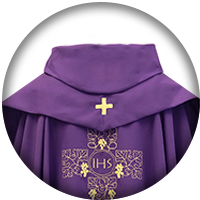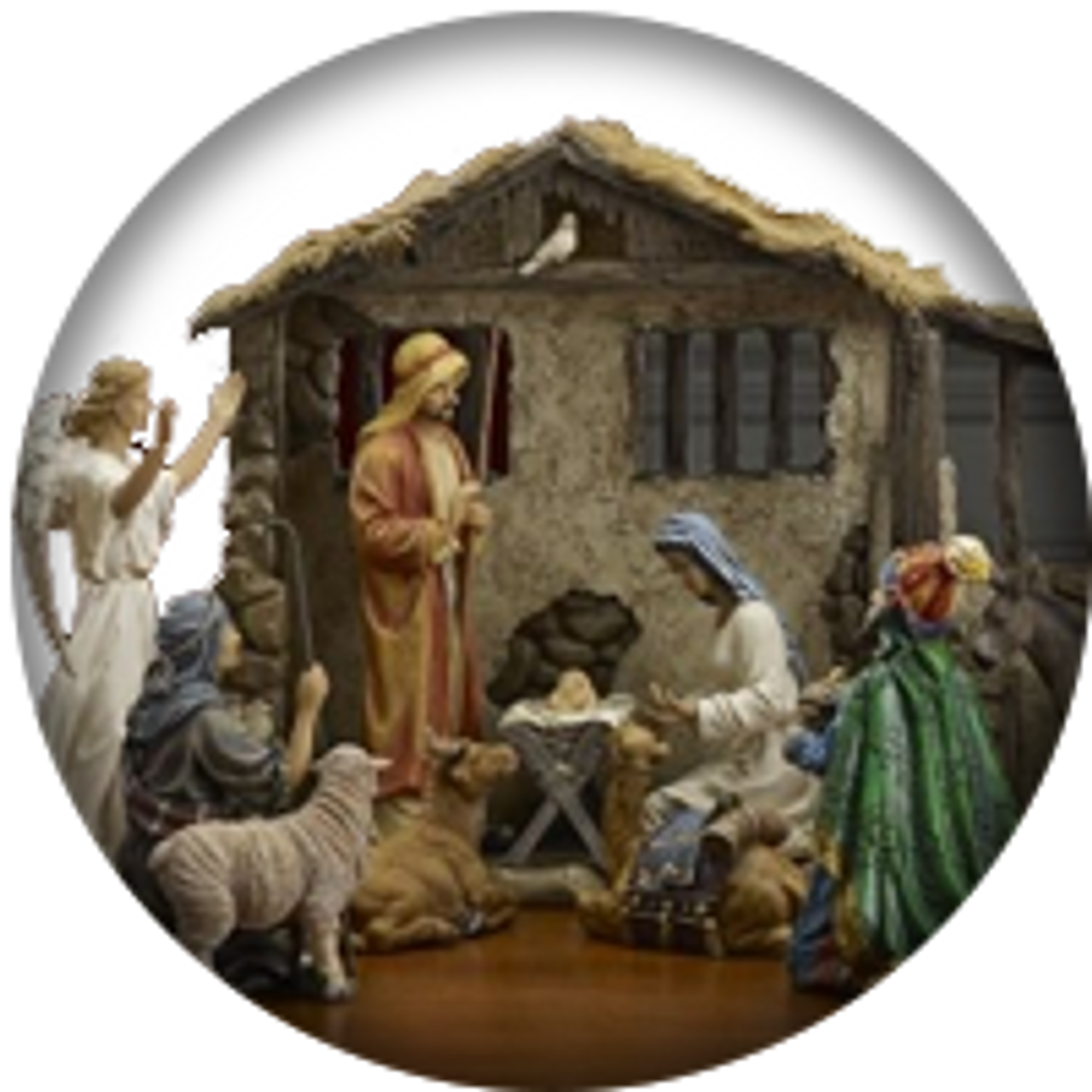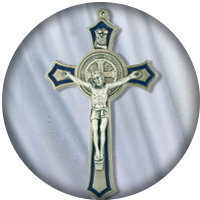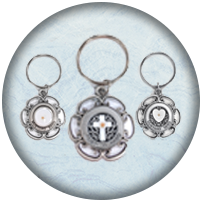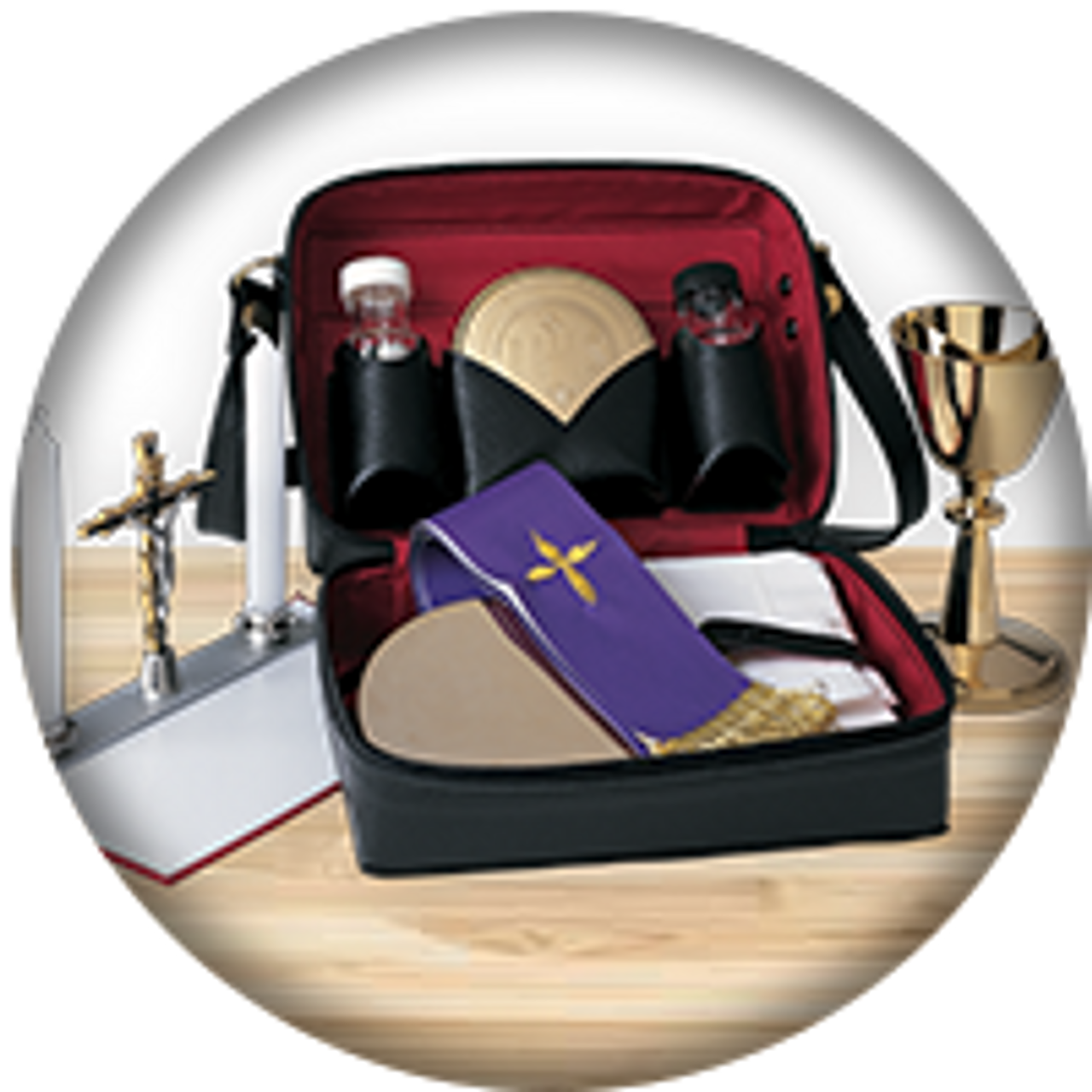THE ROSARY BLOSSOMS THROUGH THE YEARS
Kathy Boh on 10th Oct 2018
THE ROSARY'S INSPIRING HISTORY BLOSSOMS
THROUGH THE YEARS
ORIGINS, HISTORY AND DEVELOPMENT
The feast of Our Lady of the Rosary is usually on Oct 7th. Since it falls on a Sunday in 2018, it is not liturgically celebrated this year, but the month of October is devoted to Mary and the rosary. In October, 2016, we published an article on the origins, history and development of the rosary. We do that again this year.
October is the month of the rosary, as many are aware. The rosary is a prayer practice comprised of memorized prayers, notably the Apostle’s creed, the Our Father, the Glory Be, and the Hail Mary. Much is written elsewhere about its use and instruction, and the many inspirational and devotional aspects associated with it. So we will focus here on its origins, history and development.
EARLY CENTURIES: THE BIBLE AND THE PSALMS
The rosary was originally formed in the early centuries of Church history as a reflection of the habit of Christians reciting the Psalms—as many historians report. Specifically, those in religious orders—who had access to written bible passages—would often memorize and recite psalms. The monks studied the scriptures—some hand-copied them—and the psalms were heart-felt messages of praise of and toward God. They were intercessions and cries out to God, and worshipful supplications.
“Christ forbade meaningless repetition (Matt. 6:7), but the Bible itself prescribes some prayers that involve repetition. Look at Psalms 136, which is a litany (a prayer with a recurring refrain) meant to be sung in the Jewish Temple. In the psalm the refrain is ‘His mercy endures forever.’ Sometimes in Psalms 136 the refrain starts before a sentence is finished, meaning it is more repetitious than the rosary, though this prayer was written directly under the inspiration of God.” 1
PATERNOSTER AND ANGELIC SALUTATION
From the time of the apostles, the Our Father that Jesus taught has been used in prayer. Lay people in early centuries were not educated to be able to read scripture, nor did they have free access to a bible. When they sought simple prayer during their everyday life, the monks helped work out for them a substitute for David’s Psalter. The “Our Father” (or, in Latin, the “Pater Noster”) was often said repeatedly. Prayer beads were used to keep track of prayers that had been recited, and the string of beads had as many prayer-beads as the number of psalms (150). Consequently, the prayer on the prayer beads was often referred to as “Paternoster” beads.
The “Hail Mary” that was used for centuries was shorter—simply the biblical quotation (sometimes called the “Angelic Salutation”) that was spoken by the angel Gabriel to Mary…. “Hail, highly favored one, the Lord is with you… You shall conceive in your womb and bear a son…Jesus” [Luke 1:28,31.] Added later to the prayer were Elizabeth’s words to Mary when they both were carrying their sons, John and Jesus. “Most blessed are you among women, and blessed is the fruit of your womb…”[Luke 1:42.] The Angel Gabriel’s words and Elizabeth’s greeting became prayers that were also applied to prayer beads, and called the “Marian Psalter”.
Mary’s response to the Angel Gabriel is so expressive of her heart and her focus: “My soul magnifies the Lord, and my spirit rejoices in God my Savior… He has regarded the lowliness of His handmaid… For He who is mighty has done great things for me and holy is His name… “ [Lk. 1:46-49] (The full Magnificat from the gospel of Luke is printed in the footnotes below.) 2
The words that came from Mary's heart expressed great praise, honor, deference, focus and meekness toward her Lord and Savior… always letting the glory of her Savior remain in the forefront—even though that God-became-man was a helpless baby in her own womb. The fact that she was His mother on earth never overshadowed—in her mind or heart—the glory of the Lord God Almighty.
“… Mary’s focus was on rejoicing in God, in his exciting miracles and leadings… She was capable of being affected and shaped by the Holy Spirit, reachable, gateless, wall-less. She was undefined in any final way in terms of her own plan for her life or else she would have rejected God’s word. She was open to finding out God’s plan for her life step-by-step, never having the whole picture and never locking out what God might do next. She was free to be vulnerable to God…”
“…Mary was vulnerable and trusted God’s plan totally. She knew she did not fit into anyone’s plan but God’s, not even Joseph’s. She realized that God’s plan was scandalous in terms of her time; it put her in great jeopardy and had seemingly impossible complications. She resisted proving herself to Joseph and trusted God to protect her.” 3
THE ROSARY AS WE KNOW IT
What we see in the later form of the “rosary” is a development and combination of these two primary prayers: the “Our Father” and the “Hail Mary”. In later centuries, the focus became more on the Marian devotion than on the “Our Father”. (The power of the “Our Father”*—which was Jesus’ specific instruction on ‘how to pray’ [Mt.6:9]—is being re-discovered by many today.) The term for rosary has a meaning connected to the flower, "rose", and means: a garland of roses. The rose has been one of the symbols used to represent the Blessed Virgin.
The “Glory Be” was added in praise to God, and the Apostles’ Creed became the broad-stroke, faith-affirming prayer.
Like those Christians helped by the monks with the Paternoster beads, Christians throughout the ages have sought various ways to stay engaged in prayer during the day. Some specifically have pursued means by which they could simplify some of their praying or synchronize it with others… or be able to participate in active parts of their day while praying. The rosary has become one such way.
Praising God is a vital part of our approach and attitude toward God. The “Glory Be” (or “Doxology”, as traditionally it has been called throughout various Christian denominations) is a simple and direct hymn of praise to God the Father, God the Son, and God the Holy Spirit. (Referring back to the psalms connection to prayer beads, it is interesting to note that the last psalm—Psalm 150—is called a “Final Doxology”. The last line of that psalm reads: “Let everything that has breath praise the Lord. Hallelujah!”)
THE FOUNDATION STONE OF INTERCESSION
The “Glory Be” and the “Our Father” (and part of the “Apostle’s Creed”) set the stage for both our praise and for our asking. Praise, adoration and worship set us in the right frame of mind toward God.
We acknowledge the One Who created all things; knows all things; is the source and sustainer of all life… Who immeasurably loves and cares inexhaustibly for fallen sons and daughters (living on a pin-prick of a small planet set in a sea of endless galaxies) to send the Divine Son to live, suffer and die for each of us… even the most ungrateful and rebellious among us.
As we mentioned at the beginning of this article, petitioning and interceding lovingly for others is all part of the message of the psalmist… and is found throughout the lives of the prophets and priests in Israel’s history. Since the rosary has become such an instrument of prayerful intercession (for salvations, for peace in the world, and against evil that we battle, etc.) we will take a look at intercession and how it connects to our primary Intercessor—our great High Priest.
Jesus, Himself, is the Son of God—priest and prophet—who not only died as Savior, but continues to be our great High Priest. As we look at Jesus’ call as high priest, we can unite with His role (as His followers, as His sisters and brothers, as His bride) in intercessory prayer… even as we say the rosary. The book of Hebrews—and the gospels—give us a helpful glimpse of Jesus’ role in intercession.
“Every high priest is taken from among men and made their representative before God, to offer gifts and sacrifices for sins. He is able to deal patiently with the ignorant and erring, for he himself is beset by weakness…” [Hebr. 5:1-2] [author’s note: In Jesus’ case, his only weakness was his human flesh (and not sin**). His humanity (body and soul: mind/will/emotions) was subject to, and experienced with, temptation and assaults from the enemy. The enemy of our souls (and enemy of everything that God creates and sees as “good”) works against God’s purposes and plans, and against our spirit, soul and body.]
“No one takes this honor upon himself but only when called by God… In the same way, it was not Christ who glorified himself in becoming high priest, but rather the one who said to him: ‘You are my son; this day I have begotten you’… In the days when he was in the flesh, he offered prayers and supplications with loud cries and tears to the one who was able to save him from death”, (see Mk. 14:35; and Jn. 12:27, with the footnote in NAB revised edition) “and he was heard because of his reverence. Son though he was, he learned obedience from what he suffered, and when he was made perfect 4 [see expanded comments in footnotes], he became the source of eternal salvation for all who obey him, declared by God high priest…” [Hebr. 5:3-10]
“Therefore, since we have a great high priest who has passed through the heavens, Jesus, the Son of God, let us hold fast to our confession [of faith]. For we do not have a high priest who is unable to sympathize with our weaknesses, but one who has similarly been tested in every way, yet without sin**. So let us confidently approach the throne of grace to receive mercy and to find grace for timely help.” [Hebr. 4:14-16]
So we see that in the New Testament, it was and is the call of our High Priest, Jesus, to graciously intervene/intercede on our behalf and still continues to intercede for us.
And Jesus “is always able to save those who approach God through him, since he lives forever to make intercession (therefore is ever-interceding) for them…” [Hebr. 7:25]
“[B]ecause he remains forever, [he] has a priesthood that does not pass away.”[Hebr. 7:24]
THE CALL TO PRAY
Many have heard the call to pray through various Marian apparitions and fervent requests by Mary to pray for others in this world. We take note that God—throughout Bible history—has continually sent messengers to speak to us and draw us into His intense desire to “save”.
Mary has been sent—particularly in recent centuries—to call us to prayer, as Jesus did and continues to do. For this and other reasons, the rosary and Marian devotion became more popular and prominent in the 19th and 20th centuries, as even older manuscripts (for instance, St. Louis de Monfort’s (1673-1716) The Secret of the Rosary, pub. 1911) were published and various popes encouraged the rosary as a devout practice.
It remains foundational that it is Jesus Who invites us to follow His example, and join our intercessions with Him, as we pray and intercede even now—especially for the salvation of souls. I believe it is difficult for us to comprehend just how high a calling we have in interceding for others—and even in “sharing” some of Christ’s sufferings. The Savior of our souls seeks to apply His love and salvation in this day and this time and “this” place—whatever that “place” ends up being. We can become both part of the call and part of the fulfillment… particularly in a time when so much of anything that is of God, of truth, of justice or right living is being trampled or thrown out in (and by) the culture around us.
PRAYER FOR OTHERS—INTERCEDING
So we understand: Christians are called to intercede—to pray to God on behalf of one another and for each other’s needs—as we see plainly in scripture:
“First of all, then, I ask that supplications, prayers, petitions, and thanksgivings be offered for everyone…” 1 Timothy 2:1]
“With all prayer and petition pray [with specific requests] at all times[on every occasion and inevery season] in the Spirit, and with this in view, stay alert with all perseverance and petition [interceding in prayer] for all God’s people.” [Eph. 6:18, Amplified Bible]
“In the days when he was in the flesh, he [Jesus] offered prayers and supplications with loud cries and tears to the one who was able to save him from death, and he was heard because of his reverence.” [Hebr. 5:7]
How great to see just how much we are encouraged to join with Jesus in interceding for those on earth who are in need of his help, his salvation, and his grace!
We now address the phrase in the “Hail Mary”: “Pray for us sinners…” in regard to the issue that some non-Catholics have presented: that Christ is the only mediator. We affirm, with them, that there is only One Savior of mankind. He IS the only Way, Truth and Life. Jesus Christ alone—His death and resurrection—opens the gate to heaven and to new life, both here and for eternity. The shedding of His blood alone atones for our sins. To give further understanding, we quote from a comment in an article on the rosary from “Catholic.com”: 5
“…1 Timothy 2:5: ‘For there is one God, and there is one mediator between God and men, the man Christ Jesus.’ But in the preceding four verses (1 Tim. 2:1-4), Paul instructs Christians to pray for each other, meaning it cannot interfere with Christ’s mediatorship: ‘I urge that prayers, supplications, petitions, and thanksgivings be made for everyone. . . . This is good, and pleasing to God our Savior.’
We know this exhortation to pray for others applies to the saints in heaven who, as Revelation 5:8 reveals, intercede for us by offering our prayers to God: ‘The twenty-four elders fell down before the Lamb, each holding a harp, and with golden bowls full of incense, which are the prayers of the saints.’” 6 [see comment on ‘saints’]
In summary, throughout Bible and Christian history, God has called on His people to pray… to pray in many ways, but, specifically to call upon His help and intervention in behalf of those around us. Many Marian apparitions and other visions to saints and holy people throughout the Christian experience attest to the fact that God calls on us to intercede for peace in the world, for reparation for sins (our crying out in petition, thanks and supplication for ourselves and others for God’s mercy and intervention), and prayer for particular places and peoples in the world around us.
MEDITATION ON THE MYSTERIES—THE SAVIOR’S LIFE
Those who are highly devoted to saying the rosary often point to the power of meditating on the mysteries of the rosary. The original 15 “Mysteries” involve, primarily, events in our Savior’s life: 5 Joyful Mysteries, 5 Sorrowful Mysteries, and 5 Glorious Mysteries. As we pray the 5 decades of the rosary, we are encouraged to think about and ponder on (…appreciate and receive God’s inspiration regarding) timely events during, and immediately after, Jesus’ life on earth. The 5 “Luminous Mysteries” were added in 2002 by Pope John Paul II, and promoted through his papal apostolic letter Rosarium Virginis Mariae.
POPE PIUS V AND THE FEAST OF THE HOLY ROSARY
“In 1571, Pope Pius V organized a fleet under the command of Don Juan of Austria the half-brother of King Philip II of Spain. While preparations were underway, the Holy Father asked all of the faithful to say the rosary and implore our Blessed Mother's prayers, under the title Our Lady of Victory, that our Lord would grant victory to the Christians. Although the Moslem fleet outnumbered that of the Christians in both vessels and sailors, the forces were ready to meet in battle. The Christian flagship flew a blue banner depicting Christ crucified…
The following year, Pope St. Pius V established the Feast of the Holy Rosary on October 7, where the faithful would not only remember this victory, but also give thanks to the Lord for all of His benefits and remember the powerful intercession of our Blessed Mother.” 7
ST. DOMINIC AND THE ROSARY
We will take a good look at St. Dominic’s role in the development of the rosary.
St. Dominic was fighting the Albigensian heresy, which was widespread in southern France in the 12th and 13th centuries. (This false doctrine and ideology has many inaccurate components. One, simply, is the notion that the body is of an evil origin, and the soul needs to be freed… so suicide and starvation are desirable… marital relations discouraged and dishonored… propagation and progeneration were manifestations of the soul’s subjugation to the [of-evil-origin] body… that Jesus Christ was perfect but only a creature [as—they falsely believed—the Holy Spirit was, also]… no belief in the resurrection of the body… and other false convictions…) 8
Mary appeared to him when he was having difficulty conveying the truth to the Albigensians in their heretical beliefs. Mary then told him to “preach” the rosary. He felt called to use the mysteries of the rosary—primarily the major events in the life of Christ—to enable them to meditate on these events and be converted.
“Tradition does hold that St. Dominic (d. 1221) devised the rosary as we know it. Moved by a vision of our Blessed Mother, he preached the use of the rosary in his missionary work among the Albigensians. Some scholars take exception to St. Dominic's role in forming the rosary. The earliest accounts of his life do not mention it, the Dominican constitutions do not link him with it and contemporaneous portraits do not include it as a symbol to identify the saint.” 9
Dom Louis Cougaud commented in 1922, "The various elements which enter into the composition of that Catholic devotion commonly called the rosary are the product of a long and gradual development which began before St. Dominic's time, … which only attained its final shape several centuries after his death…[O]ther scholars would rebut that St. Dominic not so much ‘invented’ the rosary as he preached its use to convert …those who had strayed from the faith.” 10
Donald Calloway asserts that “St. Dominic… was not the founder of the monastic Marian Psalter… Rather, he was… the founder… of… a new way of praying the Marian Psalter… an evangelical way infused with meditation of the sacred mysteries.” 11
In 1901, Pope Leo XIII dedicated the 15 altars of the rosary at the Rosary Basilica in Lourdes, France. While there, he referred to St. Dominic as working also in France more than a century before. The pope stated, “…By his explaining and preaching on the wonderful and sacred mysteries of God’s gifts, the light of truth burned brightly in the very places that had been overshadowed by the darkness of error…” 12
During the last two centuries there has been an increase in devotion to the rosary. There have also been some well-publicized apparitions of Mary. The Feast of Our Lady of the Rosary is on October 7, during the month of the rosary.
We gladly join with others in prayer—of all kinds, and at all times—in intercession for peace, and for greater love toward God and toward others, so that our love “does not grow cold” as Revelation chapter 3 warns. Particularly in this season of choosing our country’s leaders, we pray for wisdom and humble clarity in seeing things from God’s perspective… He whose “thoughts are high above our thoughts, and whose ways are high above our ways”. 13 Even in the midst of confusion and uncertainty around us, He has a plan, and He makes a way…
May we remember as we pray the “Our Father”* just how much God wants to see us ask for “his kingdom come, his will be done, on earth as it is in heaven.” For… wherever, whenever and however He is asked to rule and reign over people and places on this earth… and as we seek and surrender to Him as “Lord”… He can manifest His “kingship”... His “kingdom”.
Apparently, we have yet to see just how far that can take us, for about 2000 years ago, Jesus said to ask… “as it is in heaven”. [Wow!] May we believe what He said, and ask with a confidence that only God can give us, as we seek to see Him reign over our own lives, our families, work-places, (etc.) and over people and places in our midst.
Coming up next…
We continue on the rosary theme with our next two blog articles. The first is called:
"The Fatima Message, The Call to Prayer and the Rosary".
This blog takes excerpts from the first three parts of our Fatima series on "The Difficult Message of Fatima" which we ran last year to celebrate the 100th anniversary of the Fatima apparitions.
Then we will look again at Part IV of the series:
"Why Pay Attention Now to Fatima's Message?"
Both of these blog articles will look into the apparitions, the message, visions and warnings. Again we will see ways that this connects with today’s world, today's church and today’s issues. This includes some examination of Old Testament and New Testament scriptures, other inspirational writing, our response, and prayer.
FOOTNOTES
1-http://www.catholic.com/tracts/the-rosary
2-The Magnificat of Mary [Luke 1:46-55]
My soul magnifies the
Lord
And my spirit rejoices in God my Savior;
Because He has regarded the lowliness of His handmaid;
For behold, henceforth all generations shall call me blessed;
Because He who is mighty has done great things for me,
and holy is His name;
And His mercy is from generation to generation
on those who fear Him.
He has shown might with His arm,
He has scattered the proud in the conceit of their heart.
He has put down the mighty from their thrones,
and has exalted the lowly.
He has filled the hungry with good things,
and the rich He has sent away empty.
He has given help to Israel, his servant, mindful of His mercy
Even as he spoke to our fathers, to Abraham and to his posterity forever.
3-A TRANSFORMED MIND AND HEART, by Joseph L. Breault, 1978, Servant Books, Ann Arbor, MI, p.8.
4-See also Hebr. 7:26—28 on His perfection and innocence; Hebr. 8:1-3 on His role as High Priest; Hebr. 8:8-13 on the new covenant; and Hebr. 9:7, 11,12,14 on Jesus as High Priest in the new covenant.
5-http://www.catholic.com/tracts/the-rosary
6-This also refers also to non-canonized saints who are praying believers in Jesus Christ. The New Testament calls “believers”… “saints”.
7-https://www.ewtn.com/library/answers/rosaryhs.htm
8-http://www.newadvent.org/cathen/01267e.htm
9-https://www.ewtn.com/library/answers/rosaryhs.htm
10-Ibid.
11-CHAMPIONS OF THE ROSARY, by Donald H. Calloway, MIC, Marian Press, Stockbridge, MA, 2016, p.37.
12-Ibid.
13-Isa. 55:8-9

